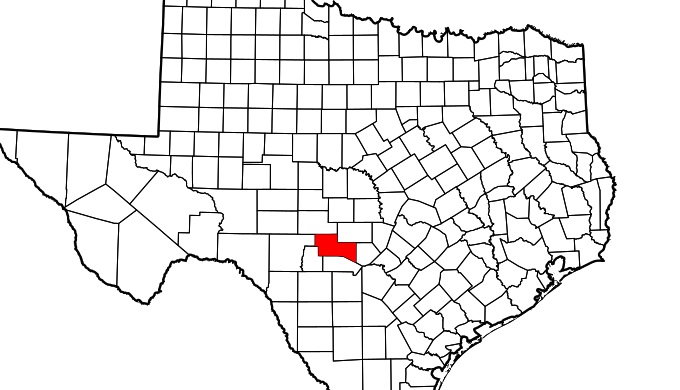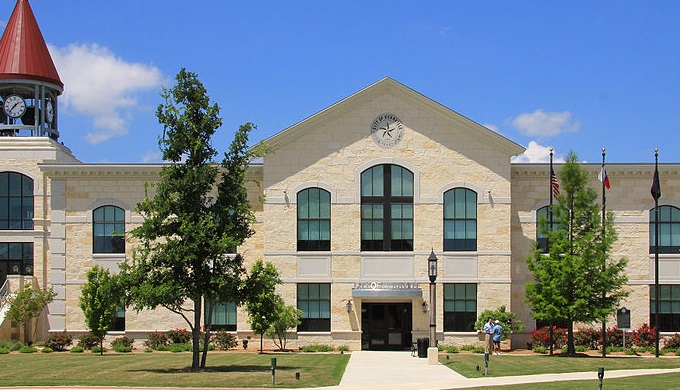Kerr County history includes the expected tales of immigrants settling the area and unexpected stories of camels breeding there. While thousands pass through the county each year as they drive through Texas, few appreciate the rich history of the towns within the county. It’s time to change your view of Kerr County with a little history lesson.
History
Kerr County History: Best Forgotten Facts & Unusual (Camel) Tales
Early Life Along the Guadalupe River

Photo: Wikimedia Commons
The Guadalupe River draws wildlife to its edges, but this source of fresh water in the Hill Country also brought people to its banks. The first people to live in Kerr County included Native American tribes such as the Lipan Apache, Comanche, and Kiowa. The tribes that lived in this area were hunters and gathers, moving on to the next grounds without building settlements. Though evidence of humans in the area exists in the form of pottery shards and arrowheads, dating to between 6,000 and 10,000 years ago, the Native Americans of Kerr County never built long-standing settlements.
European Settlers

Photo: Wikimedia Commons
Though a few Spanish missions existed in Texas, Kerr County was overlooked, aside from one naming the Guadalupe River. Only a handful of Mexican troops passed through the county as they attempted to defend nearby San Antonio from Native Americans. The first European settlement in Kerr County was established in 1846, at present-day Kerrville. A group of mainly German and other European settlers led by Joshua D. Brown founded a site along the Guadalupe to harvest cypress trees for Brown’s shingle business. Apache raiding parties made the area too dangerous to settle, and the original group left, only to return two years later, calling the place Brownsborough and building sawmills and other industry along the river.
The U.S. Camel Corps

Photo: Wikimedia Commons
One of the more unusual tales from Kerr County history happened before it became its own county. The United States Army sought a heartier option than horses to supply outposts in the American Southwest desert. They thought camels would answer the question, and Camp Verde in what would become Kerr County was where the camels would breed and train before being sent out west. This would become the failed U.S. Camel Corps. For an army accustomed to horses, the transition proved too difficult, and the Civil War interrupted the experiment. Some of the camels escaped, and their descendants may still be seen wandering in the American Southwest.
Kerr County Founding

Photo: Wikimedia Commons
Though the area existed as long as the land, the county name only came in 1856, a year after the camel experiment began. Joshua D. Brown opted to name the county for James Kerr, which changed the name of the county seat from Brownsborough to Kerrville, as it remains today. Originally, the land was a part of Bexar County before breaking off into its own area.
The Civil War

Photo: Wikimedia Commons
During the Civil War, as with many other Hill Country counties, Kerr County had a fierce group of Union supporters. In fact, the vote was extremely close in Kerr County. The dissenters created a Union League with fellow supporters from nearby Gillespie and Kendell Counties. This group aimed to protect the families of Unionists from Confederate draft officers and sympathizers and from Native American raids. Unfortunately, this group failed to stop the massacre of 61 conscientious objectors who attempted to run away to Mexico and were killed in the Massacre of the Nueces.
Reconstruction to the Present

Photo: Wikimedia Commons
After the war, Kerr County history turns toward prosperity. Technological innovations and a reduction in Indian raids resulted in a more peaceful time and greater growth for the county. The coming of the San Antonio and Aransas Pass Railway in 1887 also helped to spur the populations of both Kerrville and Kerr County. Thanks to its diversified economy, which includes aircraft construction, ranching, farming, healthcare, and education, Kerr County has been able to stay on a persistent growth pattern even in the face of national recessions and depressions. Throughout Kerr County history, this area of the state has proved to be emblematic of the independent spirit of the heart of Texas.
References:


